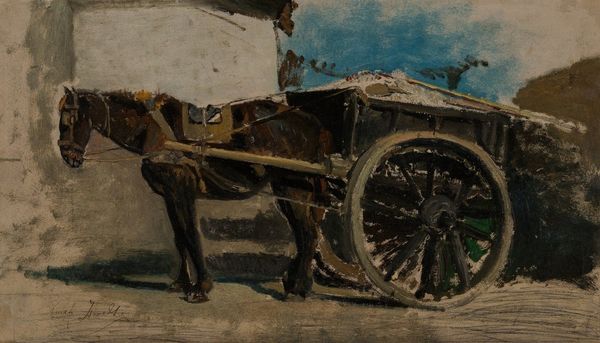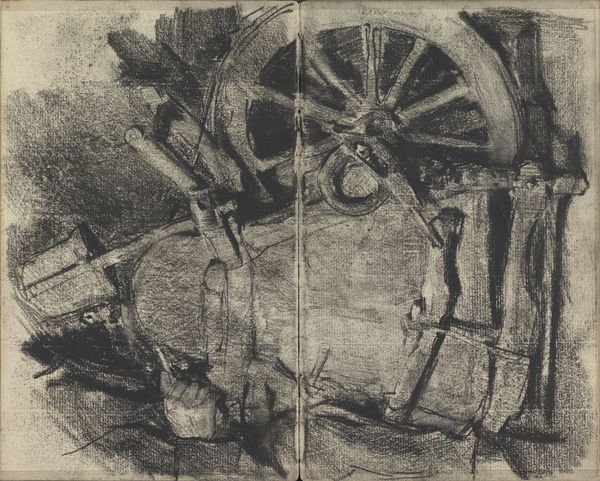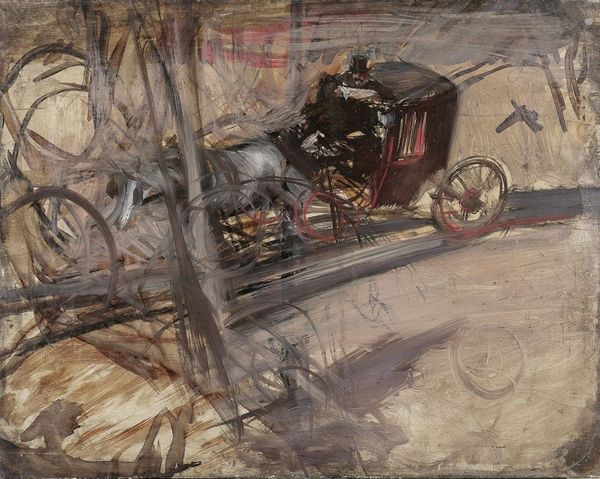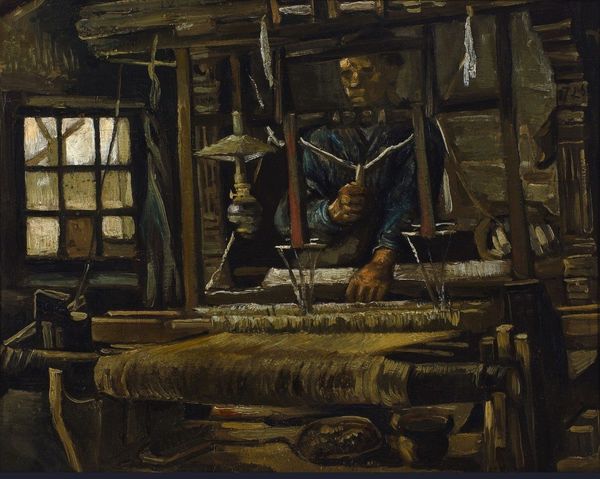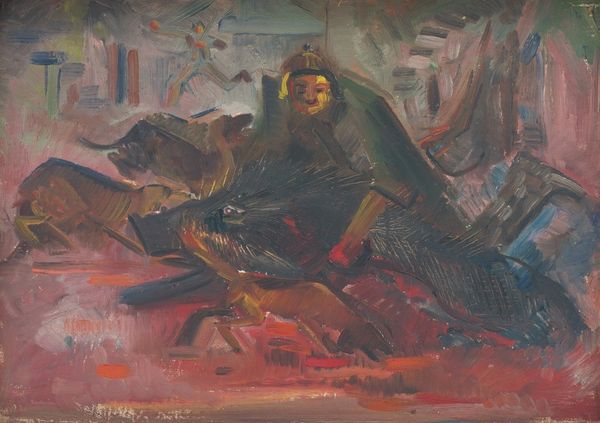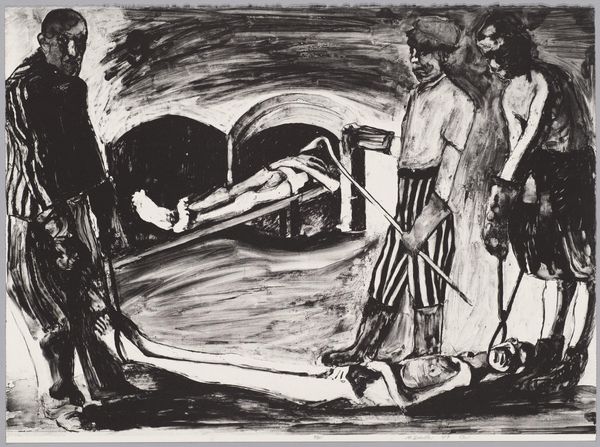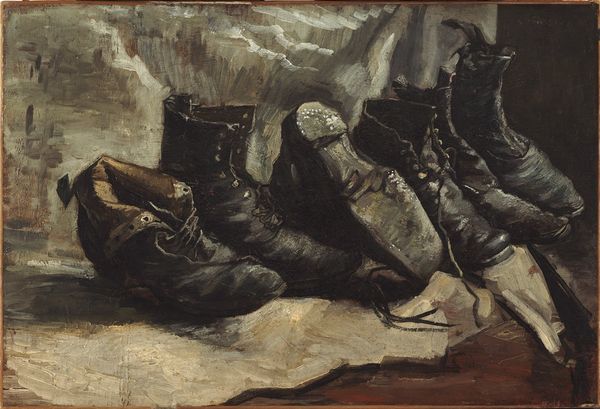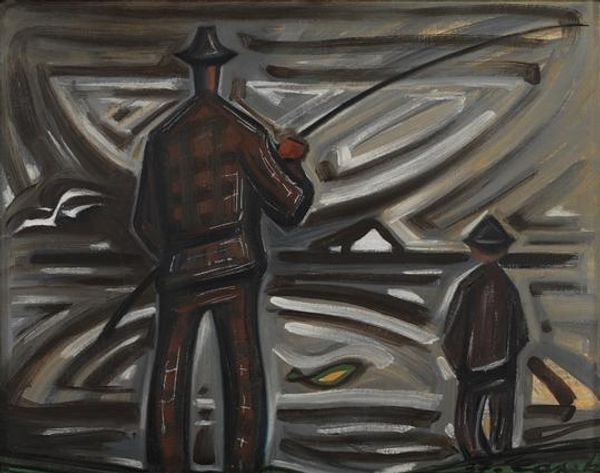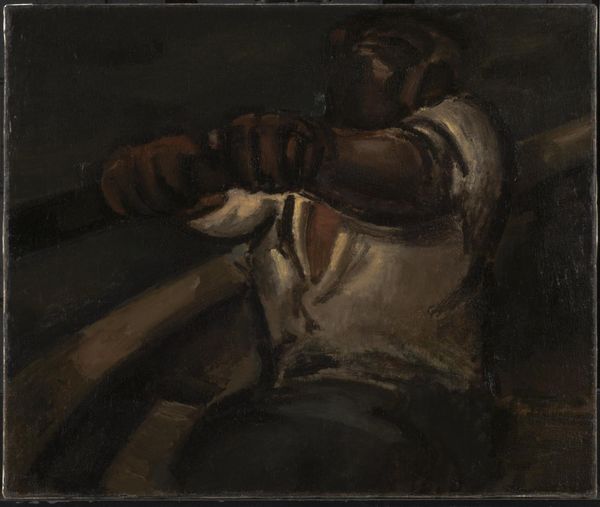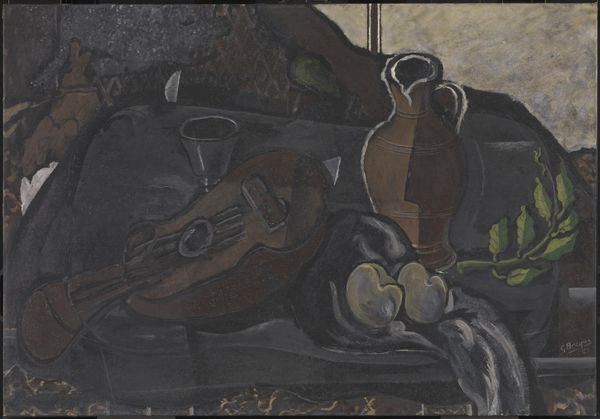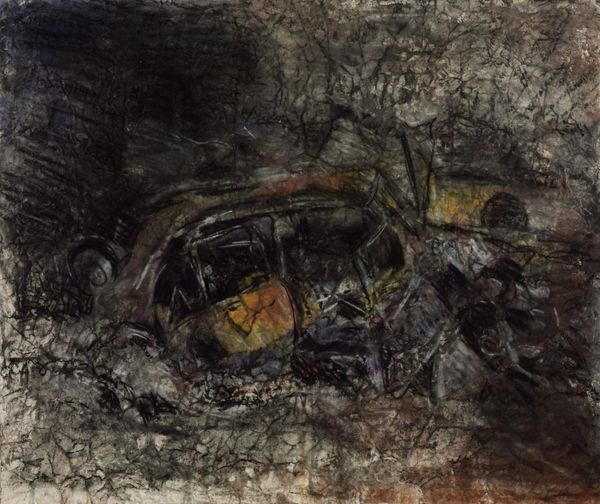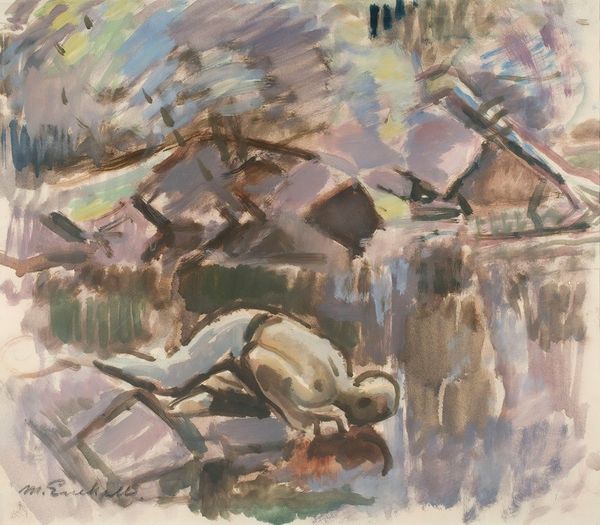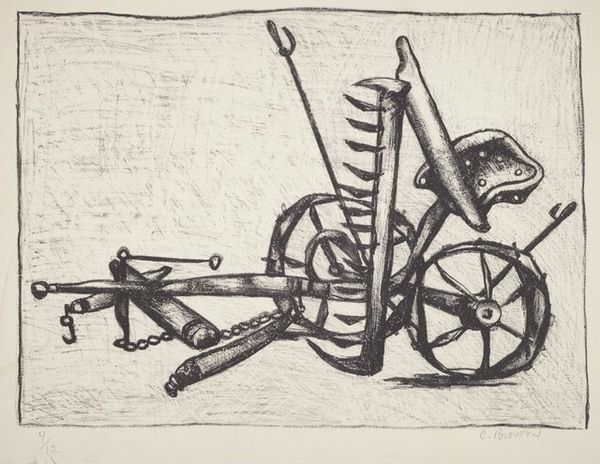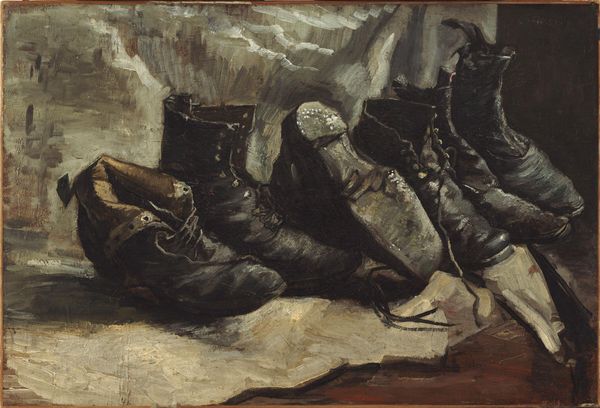
painting, oil-paint, impasto
#
narrative-art
#
painting
#
oil-paint
#
oil painting
#
impasto
#
genre-painting
#
post-impressionism
Copyright: Public Domain: Artvee
Curator: Here we have Vincent van Gogh’s "Bobbin Winder," painted in 1885. He renders this everyday object with his characteristic thick, impasto application of oil paint. Editor: It’s incredibly somber, almost haunting. The limited palette of greens and browns really emphasizes the dreariness of the scene. I feel the weight of labor in those dark strokes. Curator: Van Gogh’s choice of subject matter is quite revealing. Rather than grand landscapes or portraits, he often focused on the tools and implements of working-class life, things directly related to production and manual labor. He treats the tools with a sense of respect, almost endowing them with agency. Editor: Absolutely. The wheel almost seems to be asserting itself from the darkness. You can feel the quiet repetition of the bobbin winder in action, imagining someone endlessly winding thread. It evokes that feeling of monotonous routine, almost a silent scream in the darkness. Curator: The impasto technique, the heavy layering of paint, enhances that sense of physical exertion. You can almost see the artist struggling with the weight of the materials, mirroring the labor represented in the subject itself. It connects high art back to these processes and social activities of manual labor and domestic production. Editor: It feels incredibly raw. Like he’s channeling not just the object itself, but also the lives interwoven with it. Each daub of paint feels like a heartbeat. There's a visceral quality that transcends the simplicity of the subject; It's as if Van Gogh is binding our heart to the heart of the worker. Curator: Indeed. It challenges our traditional views of "high" and "low" art by celebrating the objects and processes usually overlooked in favour of more traditional subjects. Editor: It makes me think about how art can pull beauty and dignity from the mundane. Van Gogh wasn't afraid to find profundity in the everyday, and that's the real gift here. Curator: I couldn't agree more, it highlights the artist’s intention in how he elevated these objects with technique, while also providing us with a better glimpse into the processes of manual and domestic production that often goes unnoticed. Editor: A stark, simple, resonant, and moving portrayal of a forgotten aspect of the era!
Comments
No comments
Be the first to comment and join the conversation on the ultimate creative platform.
